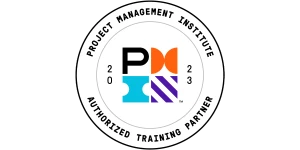Business Process Management 101
Business corporations are now facing one of the most competitive eras ever. With globalization and technology, businesses need to identify various areas for improvement in order to stay relevant. Although increasing revenue and profits year on year are essential, rising costs and escalating customer demands have developed a need for corporations to improve internal processes, increase productivity, optimize resources and decrease expenditure, or face the consequences of being wiped out by the competition.
This is where the concepts of Business Process Management (BPM) come in. Through BPM, business processes that occur within the entire organization are analyzed and areas of improvement are identified. As all operations of all departments are interconnected to one another, company-wide functionalities are criticized so that newer and more efficient processes can be proposed. At times, even the roles of human workers are considered in this exercise, with the purpose of achieving increased productivity.
Advancements in technology have resulted in the possibility of improving business processes through automation, computers and applications. However, merely adopting technology without adapting it to current business processes could spell greater inefficiency. Alterations to process flows would need to be planned out as a combination of automated and manual functions are integrated. Therefore, the BPM methodology provides a structured approach in these circumstances.
Although it is common for corporations to want to improve existing processes for cost savings purposes, some companies may look into Business Process Management as an approach to serve new organizational needs. A new product in the making may require a new business process in order to make it cost-effective to produce. A change in organizational structure through mergers and acquisitions may require business processes from two corporations to merge into one. Seamless integration between functionalities requires mapping or even elimination of overlapping processes.
An insight into how BPM initiatives are implemented
The implementation of process changes requires systematic approaches to be adopted for a smooth transition between current processes and newer ones. In this sense, the three core phases include Planning and Analysis, Design, Implementation and Monitoring.
Planning and Analysis
The Planning stage involves fact-finding of the existing processes that are utilized within an organization, and how these processes are linked to one another. Elements such as Key Performance Indicators used to measure the effectiveness of these processes are analyzed and evaluated. The human factor involved in these processes is also taken into consideration. If documented process designs are available, they are good resources to be utilized for the planning stage.
Getting the right picture of the current processes is a crucial factor towards the success of BPM. Once the fact finding initiative is completed, flowcharts that incorporate the details of existing processes are developed. Process inputs and outputs are included in these diagrams as well as differentiation between automated process flows and manual processes.
One crucial area within the planning stage is the determination of the extent of improvements that need to be implemented. These are the goals of the BPM exercise which defines the boundaries of changes to be made. Otherwise, there would be no limit towards the extent of business process improvements required.
Design
The design phase is one of the most important stages in the context of an entire BPM initiative. This is where new process flows are conceptualized and integrated with the use of software applications and systems that will help to enhance productivity. Results from the planning and analysis stage will be utilized to develop new business processes. New process flows will be designed to indicate the end result of the BPM initiative.
Next, application customizations are another area of concern. Even though the utilization of software can help improve productivity, they need to be adapted to an organization’s requirements. For instance, a company’s organization and reporting structure defers from that of other companies. Therefore, applications deployed will need to be adapted to fit variables that are unique to the organization.
The designing stage also serves as a detailed structure of the various areas that are to be changed so that implementers will have a guide on the tasks that should be completed. In other words, this constitutes the development of the blueprint of future processes.
Implementation
The final phase in BPM is the delivery of business processes that have been planned and designed. At this stage, new business processes are created based on the definitions that have been designed. Furthermore, application development or customization to coincide with business processes is also implemented here. Once implementation has been completed, reviews must be made to ensure that deliverables match the elements that have been planned and designed. Any discrepancies should be amended according to design specifications.
Monitoring BPM excellence
Improved business processes are ineffective if they are not enforced. The management team functions to drive these initiatives, which is why they need to be equipped with the needed skills and knowledge as well as leadership and management capabilities to communicate these changes to the rest of the organization.
Apart from that, operations excellence is also another important element. Business performance based on new processes must be reviewed, with any deviance addressed appropriately. Approaches such as Six Sigma are used to measure and improve quality, aligned with the core purpose of BPM.
Actual business performance measurements are statistically drafted and compared against pre-defined key performance indicators. Differences between these numbers or percentages will then indicate performance levels and efficiency of processes implemented. Although much of these are based on performance of internal operations, but in reality many of them have an effect on customer satisfaction levels. For example, turn around time for customer deliveries or order processing are internal processes that affect customer satisfaction levels.
At the end of the day, these business processes must escalate the quality of work of employees and producing excellent products and services to customers. The responsibility for this lies in the competency of corporate management to ensure that service quality is consistently sustained. Only then will a BPM initiative be considered a true success with continuous improvement across an organization attained.
Peter Peterka is President of Six Sigma US. For additional information on Six Sigma Green Belt or other Six Sigma Articles contact Peter Peterka.
Author: Peter Peterka Google
Published 09/3/2008
SixSigma.us offers both Live Virtual classes as well as Online Self-Paced training. Most option includes access to the same great Master Black Belt instructors that teach our World Class in-person sessions. Sign-up today!
Virtual Classroom Training Programs Self-Paced Online Training Programs






